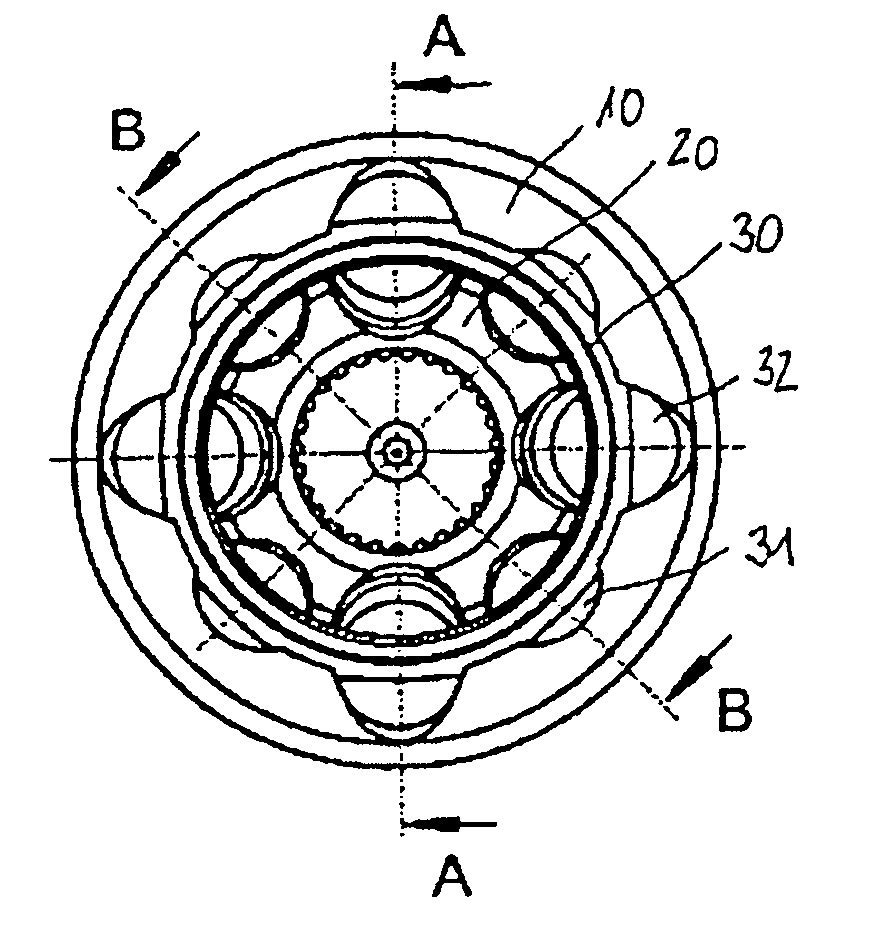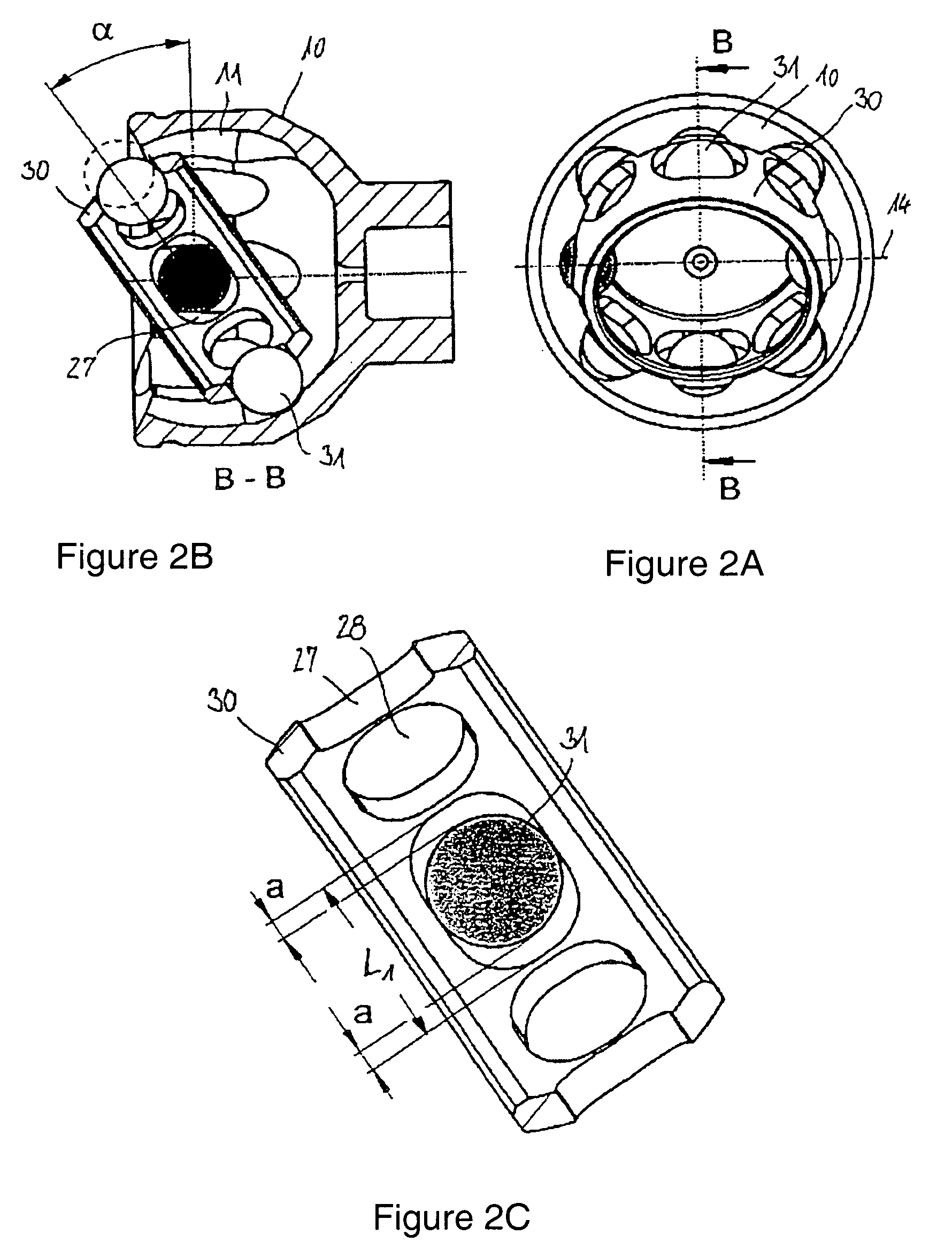Counter track joint
a counter-track joint and counter-speed technology, applied in the direction of couplings, mechanical devices, rotary machine parts, etc., can solve the problems of weakening the ball cage and reducing the web width between, so as to increase the load bearing capacity of the inventive joint, widen the web, and increase the strength of the cage in operation.
- Summary
- Abstract
- Description
- Claims
- Application Information
AI Technical Summary
Benefits of technology
Problems solved by technology
Method used
Image
Examples
Embodiment Construction
[0037] In the following figures, the same reference numerals are used to refer to the same components in the various views. Also, in the following description, various operating parameters and components are described for several embodiments. These parameters and components are included as examples and are not meant to be limiting.
[0038] The three individual illustrations of FIG. 1 will be described jointly below. The figures illustrate a constant velocity fixed ball joint and, more particularly, a counter track joint with eight balls. In the embodiment illustrated here, an outer joint part 10 comprises a joint aperture 17 and a base 18 with a formed-on journal 19. The base 19 is axially opposed to the aperture 17. The outer joint part 10 is provided with first outer ball tracks 11 and second outer ball tracks 12, each having four ball tracks being alternately distributed across the circumference. The outer joint part 10 accommodates a ball cage 30 and an inner joint part 20. In th...
PUM
| Property | Measurement | Unit |
|---|---|---|
| angle | aaaaa | aaaaa |
| angle β2 | aaaaa | aaaaa |
| torque | aaaaa | aaaaa |
Abstract
Description
Claims
Application Information
 Login to View More
Login to View More - R&D
- Intellectual Property
- Life Sciences
- Materials
- Tech Scout
- Unparalleled Data Quality
- Higher Quality Content
- 60% Fewer Hallucinations
Browse by: Latest US Patents, China's latest patents, Technical Efficacy Thesaurus, Application Domain, Technology Topic, Popular Technical Reports.
© 2025 PatSnap. All rights reserved.Legal|Privacy policy|Modern Slavery Act Transparency Statement|Sitemap|About US| Contact US: help@patsnap.com



